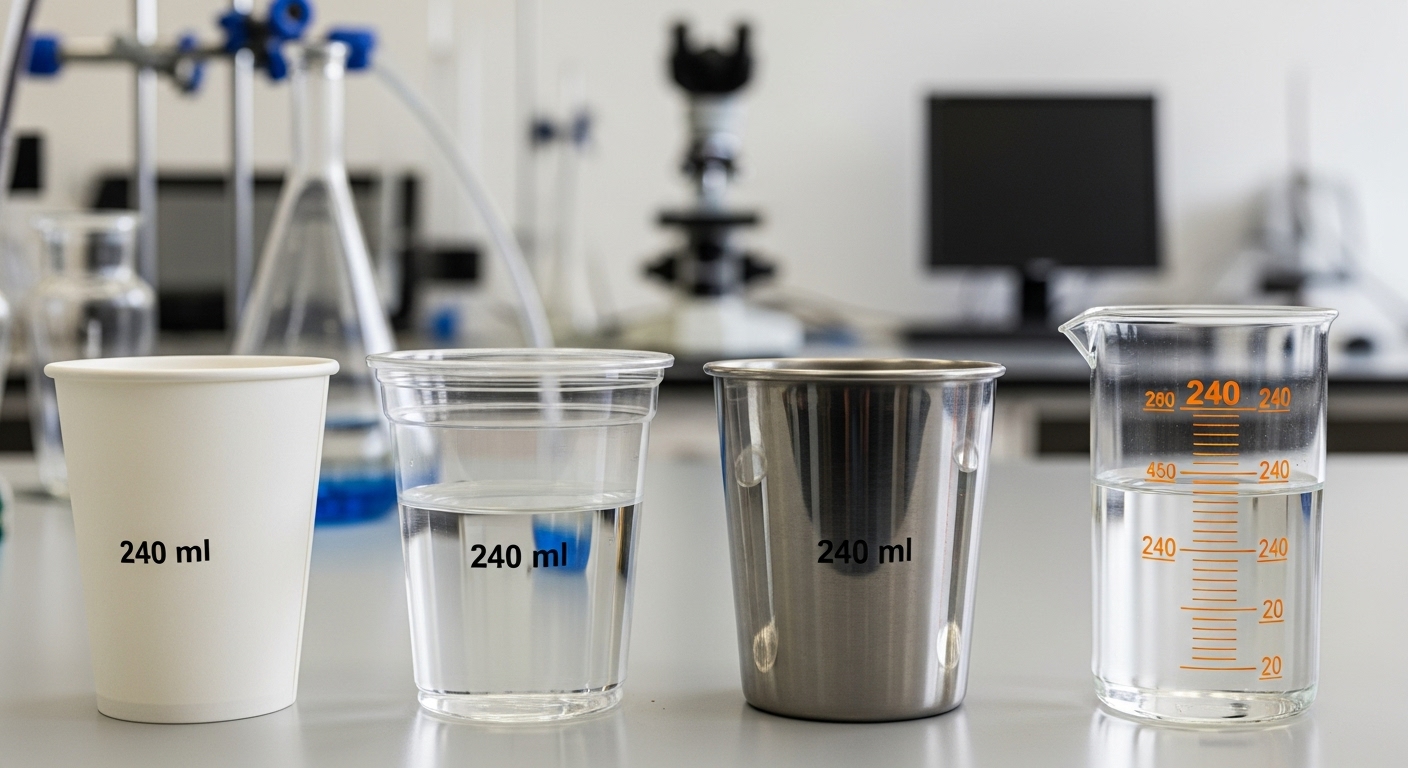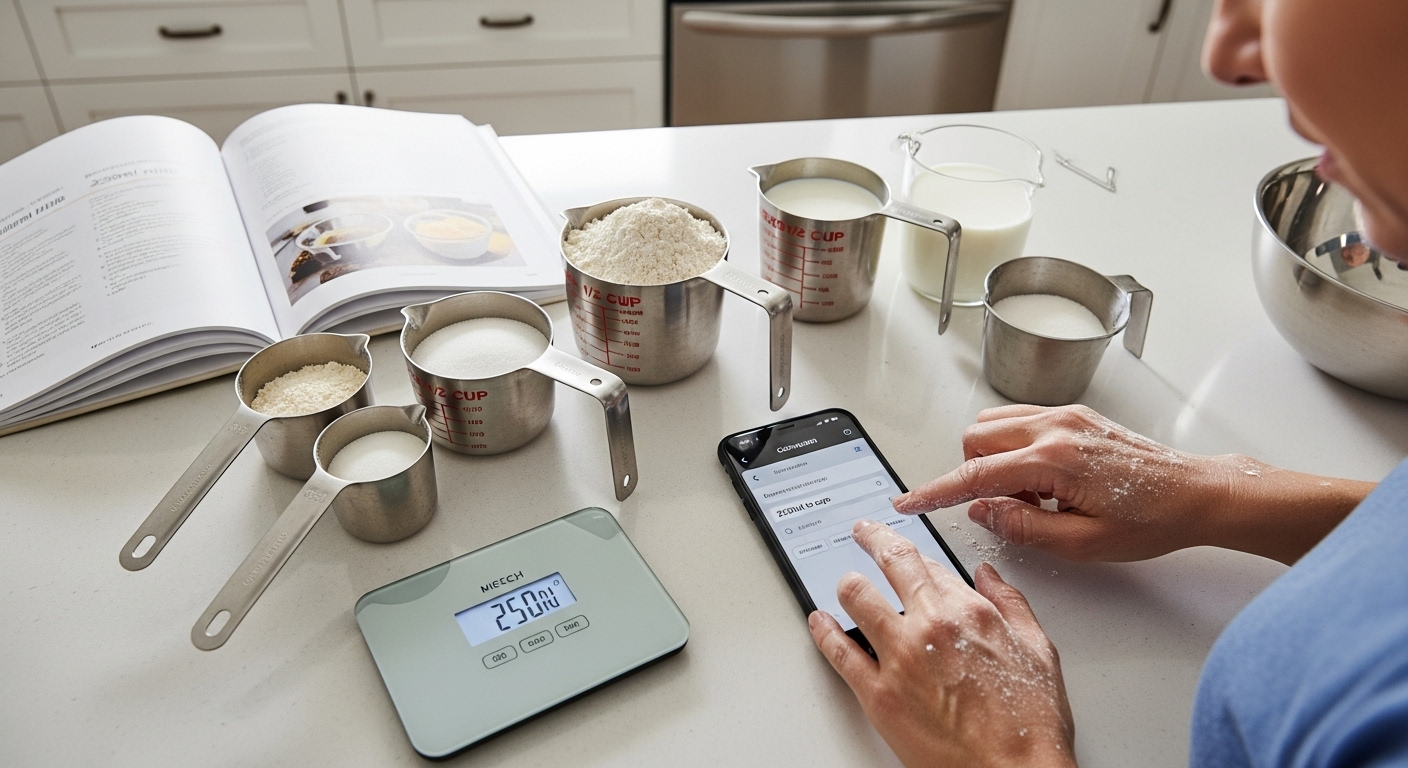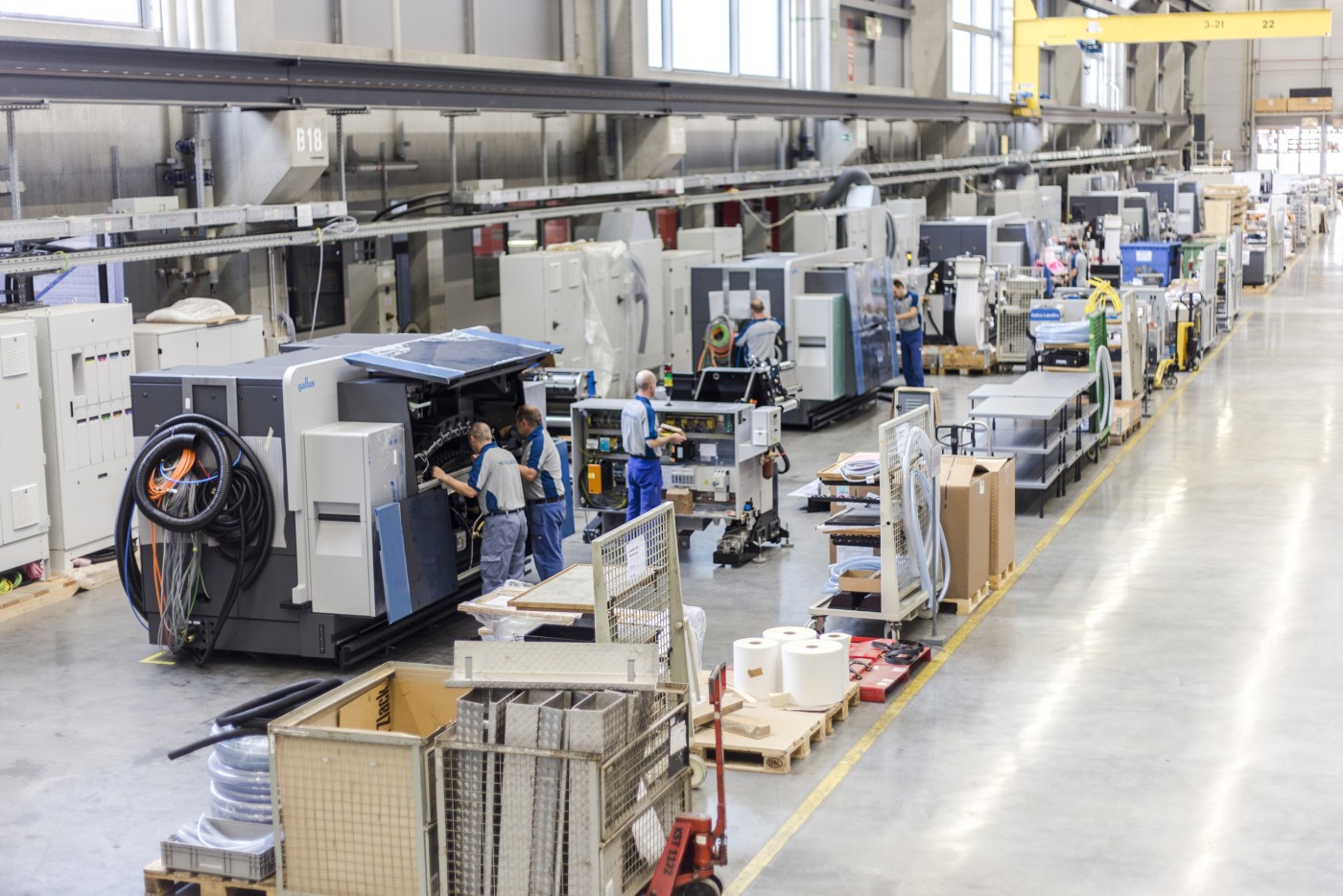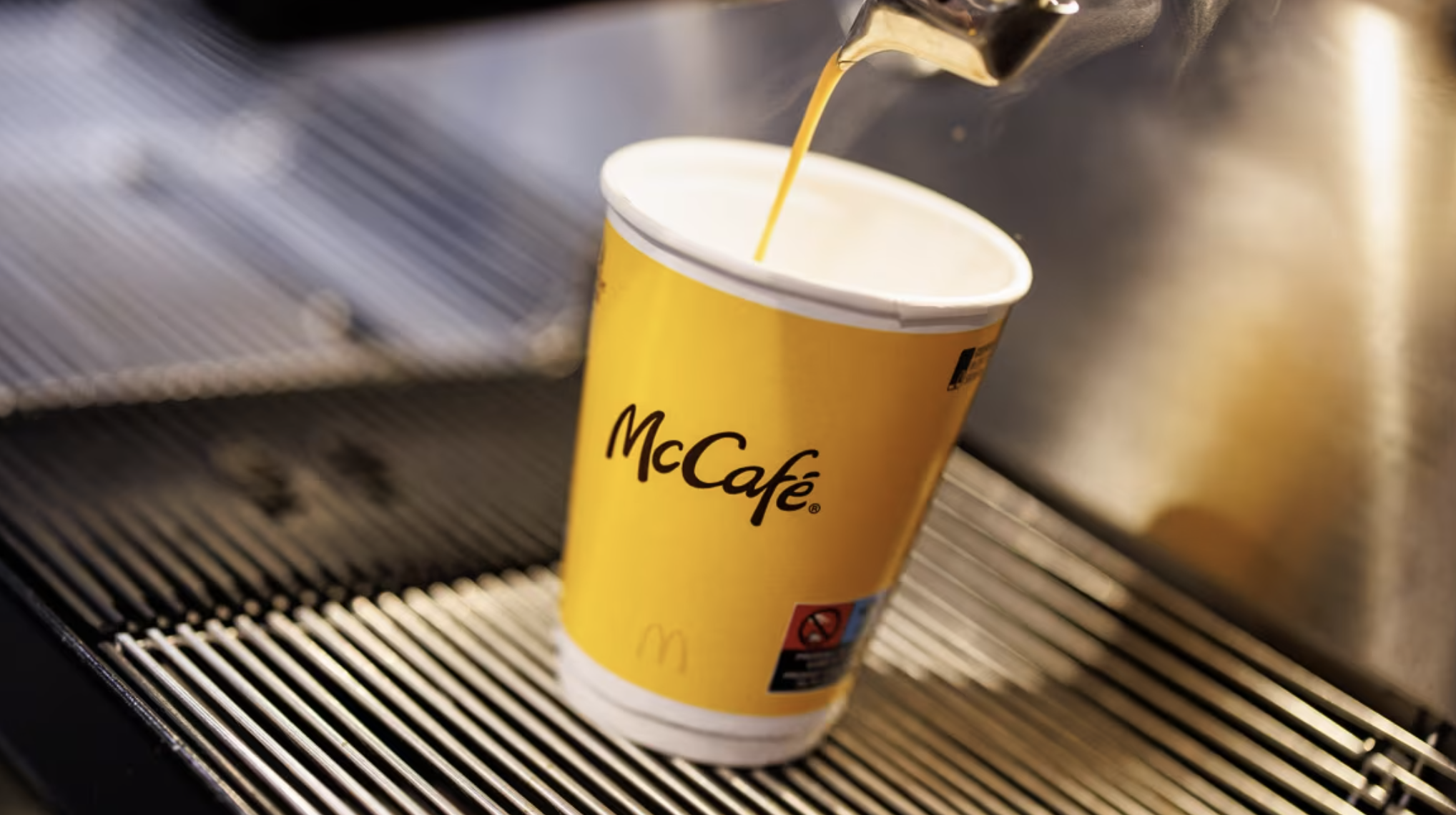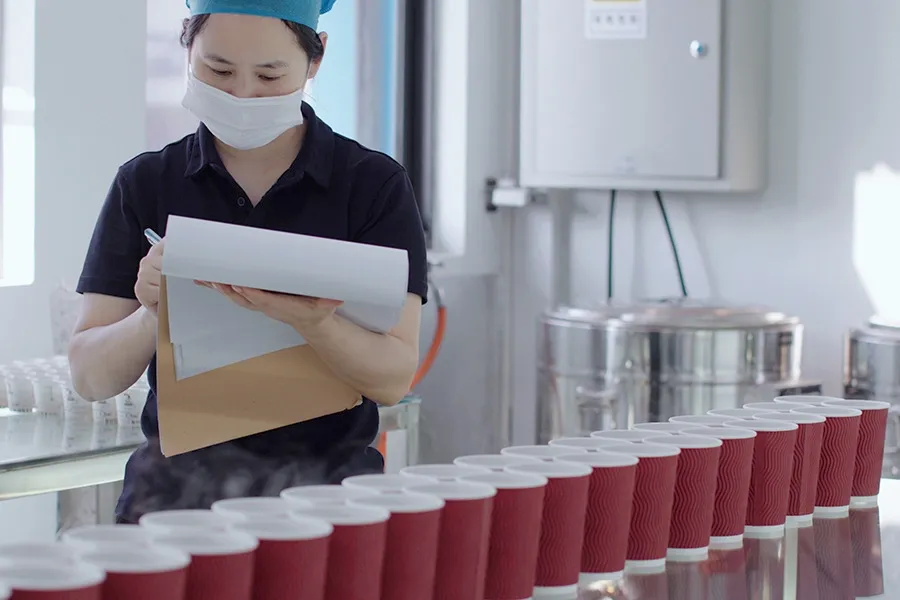Have you ever compared two paper cup quotations and wondered why one factory offers $0.035 per cup while another quotes $0.055 for the same size?
Many buyers—especially new importers and coffee chain procurement managers—face this confusion when sourcing from multiple paper cup suppliers or disposable coffee cup manufacturers.
As a professional paper cup manufacturing company, I’ve seen how unclear quotes can mislead even experienced buyers.
To decode a paper cup quote and select a true supplier, you need to analyze nine key aspects of the quotation: paper material GSM and cup structure, cup capacity, printing technology, packaging method, minimum order quantity, production lead time, certifications, logistics terms, and payment items. Each factor directly impacts cost, reliability, and long-term supply stability. Verified manufacturers such as Get Bio Pak Co., Ltd. provide transparent quotes based on international standards like FSC, BRC, and ISO 22000.
According to a 2025 report by Packaging Strategies, over 62.23% of B2B buyers misinterpret initial paper packaging quotes because they ignore hidden cost components such as coating, pallet packaging, and printing setup fees.
Each of these elements determines the total cost and reliability of your purchase.
Contents
- I. Understanding Paper Cup Materials and Structure
- II. Paper Cup Sizes and Volume Capacity
- III. Printing Options and Their Price Impact
- IV. Packaging Methods and Their Effect on Cost
- V. Minimum Order Quantity (MOQ) and Bulk Price Variations
- VI. Production and Delivery Timeline
- VII. Certifications and Quality Assurance
- VIII. Logistics and Shipping Terms
- VIIII. Payment Terms: Secure and Transparent Transactions
- How to Select a True Paper Cup Supplier
- Conclusion: Decode Smart, Buy Smart
I. Understanding Paper Cup Materials and Structure
1.1 Paper Thickness and GSM Explained
The first line on a paper cup quotation usually mentions “paper GSM” — grams per square meter, which defines how thick the paper is. Most cups are produced using 170 gsm – 320 gsm food-grade paperboard (under EUDR).
- 170–200 gsm: typically for small single-wall cold drink cups.
- 230–260 gsm: ideal for hot coffee single-wall cups with sleeves.
- 280–320 gsm: used for double-wall and ripple-wall cups.
Higher GSM means stronger cup walls, better insulation, and less deformation when holding hot liquids (What is Ideal Coffee Temperature for Takeaway Cups? See more here).
But it also means more paper usage, increasing material cost by roughly 8–12%.
| Paper Type | GSM Range | Common Usage | Cost Impact |
|---|---|---|---|
| Single Wall | 170–260 gsm | Cold drinks, vending cups | ★ Low |
| Double Wall | 280–320 gsm | Hot coffee, takeaway | ★★ Medium |
| Ripple Wall | 280–320 gsm + ripple layer | Premium takeaway cups | ★★★ High |
1.2 Cup Structure Types
Every paper cup supplier categorizes products by structure:
- Single Wall: one paper layer; economical; requires sleeve for hot drinks.
- Double Wall: two layers with an air gap; safer for hot beverages.
- Ripple Wall: corrugated outer layer for heat protection and grip.
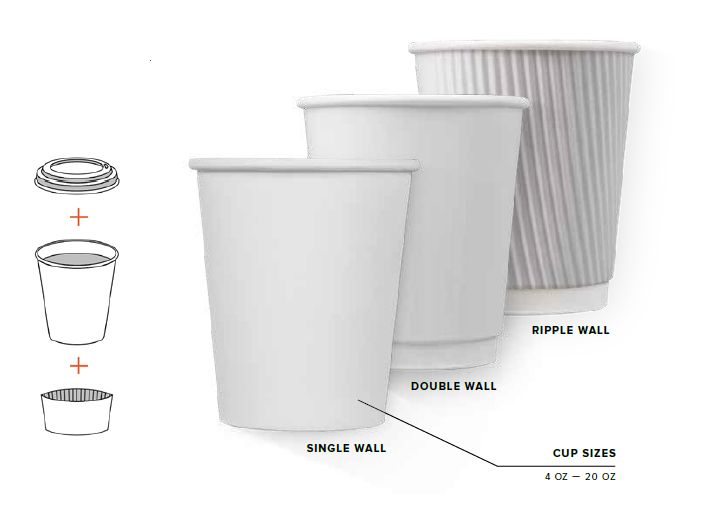
For buyers, choosing the right structure affects both unit price and customer satisfaction. A double wall cup may cost more, but it eliminates the need for sleeves, which saves secondary packaging cost.
1.3 How Materials Impact Quotation
Paper material is the foundation of the quotation.
A paper cup manufacturer quoting significantly lower prices might be using thinner paper or non-FSC raw material.
Genuine factories like Get Bio Pak Co., Ltd. disclose the paper supplier (for instance, Stora Enso or APP) and coating type (PE or PLA, or Aqueous WBBC). This transparency helps buyers verify sustainability and quality compliance.
II. Paper Cup Sizes and Volume Capacity
2.1 Standard Sizes
Paper cups vary widely in volume capacity, from espresso to large smoothies. The global standard sizes range from 120 ml (4 oz) to 600 ml (20 oz).
| Cup Size | Capacity (ml/oz) | Typical Use |
|---|---|---|
| 4 oz / 120 ml | Espresso sample cup | Coffee tasting |
| 8 oz / 240 ml | Regular hot coffee | Takeaway cups |
| 12 oz / 360 ml | Latte, tea | Café use |
| 16 oz / 480 ml | Large coffee or smoothie | Chain stores |
| 20 oz / 600 ml | Extra-large beverages | Cold drink service |
A paper cup manufacturing company must design molds for each size. Mold depreciation cost and material usage both influence the final unit price.
Need a Clear & Reliable Quote for Your Paper Cups?
Stop guessing what the terms mean. Our team provides detailed, line-by-line quotes that explain every cost, ensuring your project stays on budget with no surprises.
2.2 Volume Capacity and Price
Larger sizes require more paper, ink, and coating, and occupy more space during shipping. This adds roughly 15–20% to total cost compared to smaller cups. For buyers importing 20 ft containers, the size mix directly determines freight efficiency.
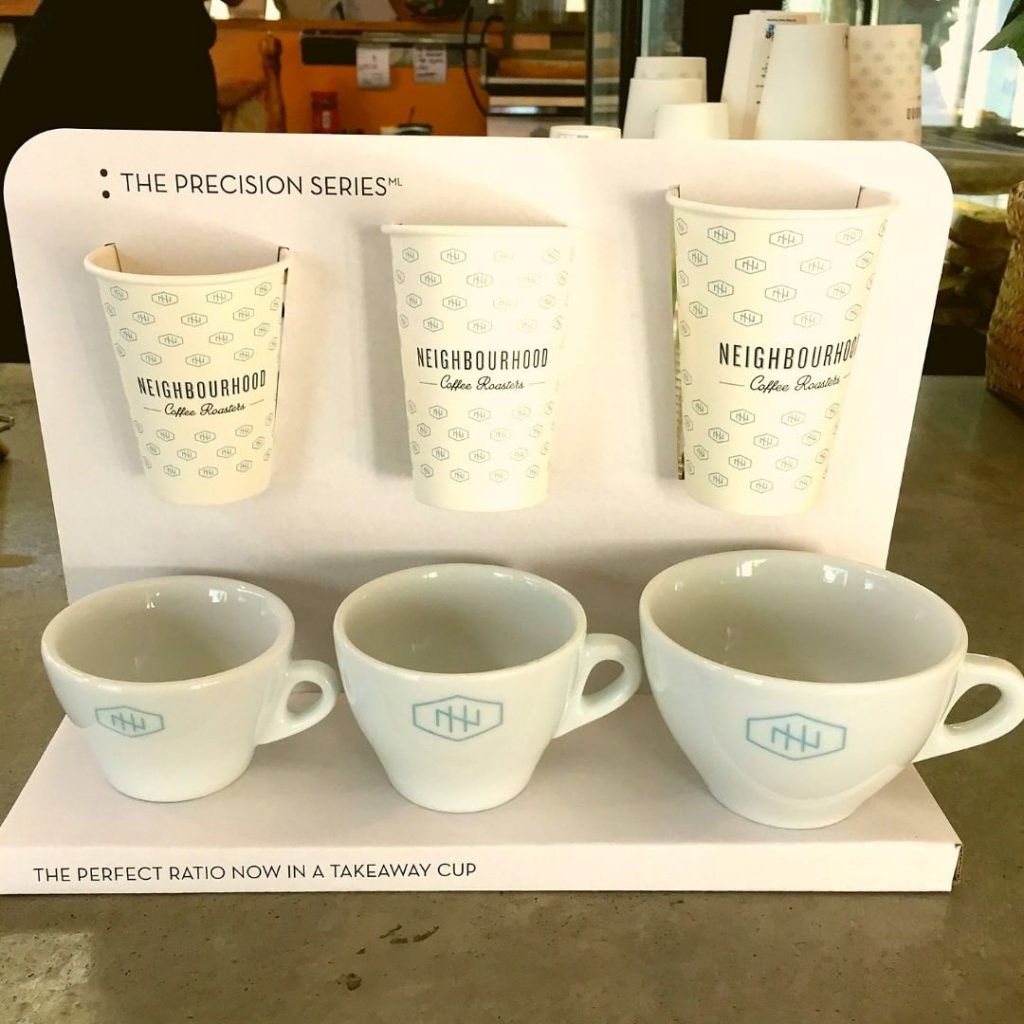
For example, a 12 oz cup typically fits 900,000 pcs per container, while 16 oz cups fit only 700,000 pcs. Understanding this helps procurement managers forecast FOB or CIF cost more accurately.
III. Printing Options and Their Price Impact
3.1 Printing Technologies
In paper cup production, printing quality represents a brand’s image.
At Get Bio Pak, we use two main printing processes:
- Flexographic printing: up to 7 colors, ideal for large-volume orders. It uses water-based ink, which is eco-friendly and compliant with FDA food-contact standards.
- Offset printing: multi-color, high-resolution artwork suitable for complex branding designs or small batches.
Some customers also request hot stamping, embossing, or matte/gloss finishing, which create premium effects but increase the price per thousand cups by 5–12 USD due to additional plates and setup time.

3.2 Design and Color Affect Quotation
More printing colors equal more printing plates, higher setup fees, and slightly longer lead time.
For cost efficiency, many disposable coffee cup manufacturers recommend limiting designs to 4–5 colors for bulk runs.
In custom printing, we always advise clients to provide vector artwork (AI or PDF) to ensure sharp printing and accurate logo placement.
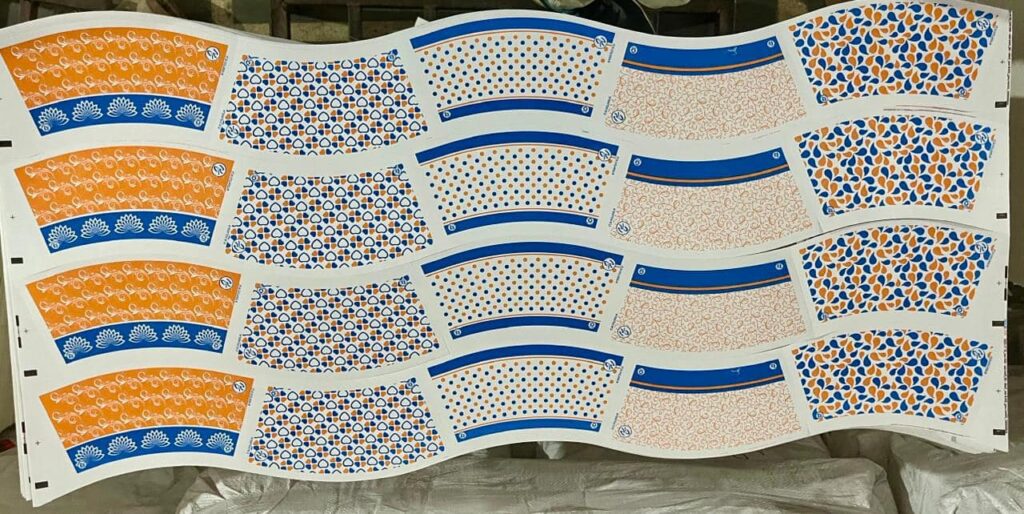
A supplier paper cup quote that includes artwork proof, pantone code confirmation, and color test print is usually from a serious manufacturer. Cheap quotes often skip this step — a red flag for brand-sensitive coffee chains.
Best way to evaluate a paper cup printing?
Flexographic printing with water-based ink is cost-effective for bulk orders, while offset printing delivers sharper images for smaller quantities. A professional paper coffee cup manufacturer always specifies color count, printing plate cost, and coating type in the quotation to ensure transparency.
IV. Packaging Methods and Their Effect on Cost
4.1 Standard Packaging Options
Packaging plays a surprisingly large role in total quotation value.
Most paper cup manufacturers use carton box packaging for domestic or small export orders. A standard export carton usually contains 1,000 to 2,000 cups, depending on cup size and structure.
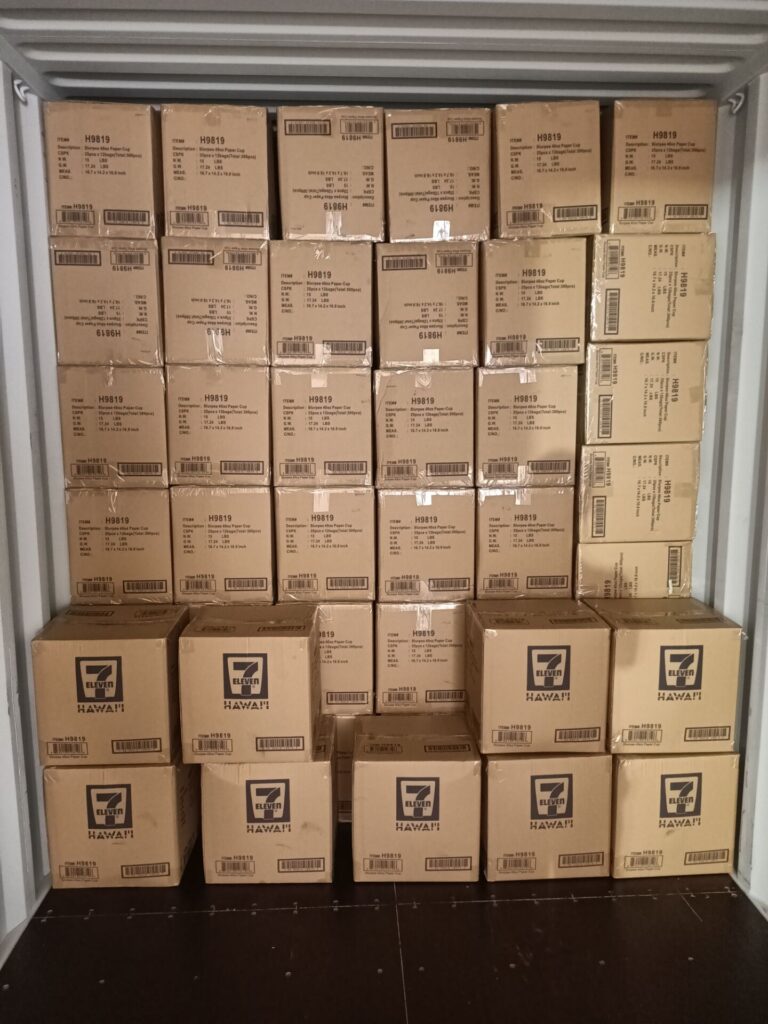
For export shipments, palletized packaging is often preferred.
Pallets make cartons easier to stack in containers, reduce damage risk, and speed up customs inspection. However, pallet packaging can add around 3–10% to the total quotation due to the cost of wooden pallets and stretch film.
| Packaging Type | Description | Cost Impact | Best Use Case |
|---|---|---|---|
| Carton Box | Cups packed by 50 pcs x 20 sleeves | Low | Domestic delivery |
| Palletized | Cartons stacked and wrapped on pallets | Medium | Sea freight export |
| Master Carton | Inner cartons + outer protection | High | Retail or fragile items |
4.2 Labeling and Branding Requirements
Customized labels, barcodes, or shipping marks are minor but necessary cost factors. When buyers require private labeling, it involves design setup, print verification, and additional labor time. For instance, applying stickers to each carton might add USD 0.03–0.05 per carton, which becomes significant in 40-foot container loads.
Reliable takeaway coffee cup suppliers always provide clear packing details—carton dimension, gross weight, and volume (CBM)—so importers can calculate their shipping cost precisely before booking freight.
V. Minimum Order Quantity (MOQ) and Bulk Price Variations
5.1 Understanding MOQ
MOQ, or Minimum Order Quantity, defines the smallest order a factory can produce efficiently.
For custom printed coffee cups, the MOQ usually starts from 30,000–50,000 pcs per size. The figure depends on the printing machine setup cost and paper supply batch.
If a buyer only needs 5,000 pcs with four-color offset printing, the cost per unit may rise by 15–20%. This is because setup expenses like color plates and paper cutting are divided among fewer cups.
5.2 How Order Quantity Influences Bulk Price
In industrial manufacturing, the economy of scale is straightforward: the more you order, the lower your cost per unit.
Most paper cup suppliers near me adjust pricing by ±10% based on total volume. Below are common examples observed in 2025 market data:
| Order Quantity (pcs) | Approx. Unit Price (USD) | Price Variation |
|---|---|---|
| 10,000 | 0.058 | — |
| 50,000 | 0.052 | -10% |
| 100,000 | 0.048 | -17% |
| 500,000 | 0.043 | -25% |
Large coffee chains, hotel groups, or distributors benefit most from long-term volume contracts. The reduced price not only offsets initial printing plate costs but also stabilizes supply planning for both buyer and manufacturer.
VI. Production and Delivery Timeline
6.1 Sample Preparation
Before bulk production, buyers often request printed samples to confirm design, color accuracy, and cup stiffness.
At Get Bio Pak, sample production typically takes 7–10 working days. The process includes artwork adjustment, plate preparation, and trial printing.
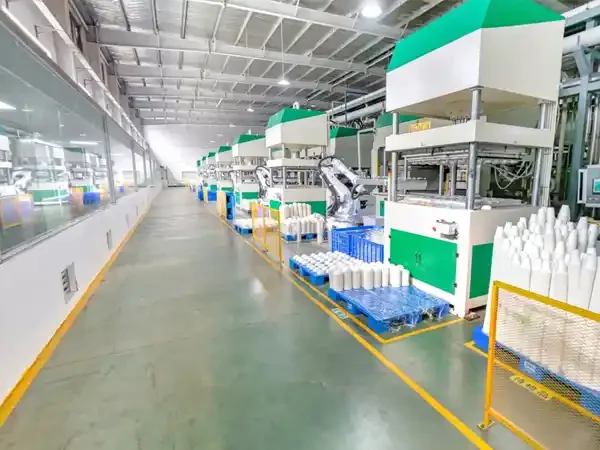
Samples are usually delivered by courier (e.g., DHL or FedEx) and charged at cost, later refundable upon bulk order confirmation.
6.2 Mass Production and Delivery
Mass production for paper cups ranges between 3–5 weeks, depending on:
- order size and color count,
- availability of raw paper stock, and
- shipping schedule to the destination port.
Efficient take away cups suppliers maintain stable raw paper inventory and multiple production lines to avoid delay during peak demand periods (like Christmas or summer beverage seasons).
Factories with 70+ high-speed paper cup making machines, such as ours, can deliver consistent quality and punctual lead time, even for large export orders.

Typical lead time for custom printed paper cups is 7–10 working days for samples and 3–5 weeks for mass production. Reliable disposable cup manufacturers maintain sufficient raw paper stock and automated machinery to ensure consistent lead times, even during seasonal demand surges.
VII. Certifications and Quality Assurance
7.1 Food Safety Certifications
In global trade, certifications reflect credibility. Every food-contact product must meet international hygiene and safety standards.
At Get Bio Pak Co., Ltd., our paper cups are certified under:
- FDA (U.S. Food and Drug Administration) for food contact safety
- HACCP & ISO 22000 for production process control
- BRC Global Standard for Packaging for quality management
- FSC (Forest Stewardship Council) for sustainable paper sourcing
- EUDR Regulation (EU) 2023/1115 on deforestation-free products
Buyers should always request copies of these certificates before finalizing contracts. This ensures compliance with import regulations in the EU, U.S., or Australia.
7.2 Factory Audits and Compliance
Beyond product certification, factory-level audits such as SEDEX or BSCI reveal how suppliers manage social responsibility and production consistency.
True paper cup manufacturers near me will gladly provide plant photos, production flow charts, or even live video tours. These transparency actions distinguish genuine manufacturers from trading companies.
Choosing a certified partner guarantees:
- safe and traceable supply chain,
- consistent quality control,
- fewer customs clearance issues, and
- stronger brand reputation in eco-conscious markets.
VIII. Logistics and Shipping Terms
8.1 Common Trade Terms (Incoterms)
Understanding trade terms helps importers control cost and responsibility boundaries. The most used terms for paper cup exports are:
| Term | Meaning | Responsibility | Common Use |
|---|---|---|---|
| FOB (Free on Board) | Supplier delivers goods to port | Buyer arranges shipping | Asia → U.S./EU imports |
| CIF (Cost, Insurance & Freight) | Supplier covers freight to destination port | Buyer handles customs | Large B2B import orders |
| DDP (Delivered Duty Paid) | Supplier handles all logistics and duty | Buyer receives at warehouse | E-commerce or small wholesalers |
A trustworthy disposable cups supplier always lists shipping weight, CBM, and estimated container loading quantity in their quotation sheet, allowing clients to estimate CIF or DDP cost accurately.
8.2 Freight Factors and Optimization
Shipping cost depends on carton dimensions, stacking efficiency, and destination port.
For instance, loading 80,000 pcs of 12 oz cups per 20-ft container may cost roughly USD 0.009–0.012 per cup in freight, depending on global fuel rates.
To minimize waste, paper cup distributors near me often request mixed-size loading—combining 8 oz and 12 oz cups in one container to maximize space usage.
When decoding logistics terms in a paper cup quotation, focus on Incoterms like FOB, CIF, and DDP. These define who pays for freight, insurance, and duties. Always request container loading data and weight details from the paper cup supplier to accurately calculate your landed cost.
8.3 The Advantage of Working with an Experienced Exporter
A genuine paper cup manufacturing company will assist clients with shipping documentation, export declaration, and customs clearance.
At Get Bio Pak, we support global logistics under FOB, CIF, and DDP terms, ensuring smooth delivery from factory floor to your warehouse. Our clients in the USA, UK, and Southeast Asia benefit from fixed shipping schedules and transparent tracking.
VIIII. Payment Terms: Secure and Transparent Transactions
Payment structure plays a key role in assessing supplier reliability. The standard international trade term for paper cups is:
- 30% deposit before production
- 70% balance before shipment or against copy of B/L (Bill of Lading)
This split ensures mutual trust: the supplier secures raw materials, and the buyer pays the rest after proof of shipment.
Avoid suppliers who request full payment upfront without verified track records. Reputable factories, such as Get Bio Pak, accept multiple payment options including T/T, L/C, and PayPal for small trial orders, providing security and flexibility.
How to Select a True Paper Cup Supplier
Step 1: Verify Manufacturing Capabilities
Check if the supplier truly owns production lines or simply acts as a trading intermediary. Genuine manufacturers usually:
- Offer factory tours or videos
- Provide equipment lists (e.g., 70 high-speed machines)
- Have in-house printing facilities for consistent quality
Step 2: Evaluate Service and Communication
Effective communication reflects a supplier’s professionalism. A true partner provides:
- Clear production updates
- Transparent sample proofing
- Quick quotation adjustments
Step 3: Compare Long-Term Value, Not Just Price
Low quotes may hide thin paper material, weaker cup rigidity, or no certifications. Always evaluate long-term reliability, sustainability, and customer service when making procurement decisions.
Conclusion: Decode Smart, Buy Smart
Choosing a true paper cup supplier is more than just comparing prices—it’s about decoding the technical and commercial details behind every quote. Understanding paper quality, printing methods, MOQ, certifications, and logistics terms allows buyers to avoid hidden costs and identify professional manufacturers.
📩 Get a Quote Today
Partner with Get Bio Pak Co., Ltd — your reliable paper cup supplier near me for sustainable, certified, and visually appealing beverage packaging.
Visit www.getbiopak.com or email sales@getbiopak.com to get your detailed quotation today.


